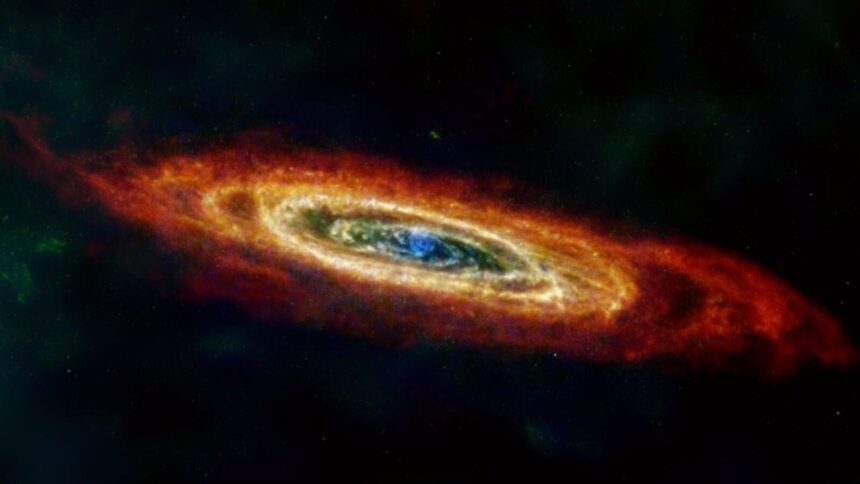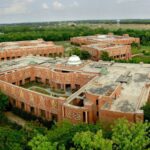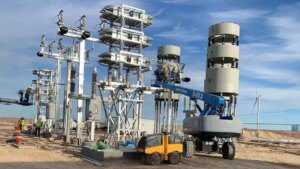NASA’s exploration of nebulas offers a mesmerizing peek into the ever-changing and vibrant regions of space where stars are born and evolve. The observations from powerful telescopes like Hubble provide invaluable insights into these celestial phenomena, unveiling the processes of star formation, mass ejection, and the interplay of cosmic forces.
As NASA delves deeper into the study of these extraordinary structures, we gain a more profound understanding of the universe’s intricate tapestry and the fundamental processes that shape our cosmic environment.
Explore these 5 stunning NASA images:
1. A planetary nebula with a unique appearance resembling a turquoise blue eye at the center of a red-orange hourglass shape. This nebula, known as the “eye” star, is distinct because its central star is off-center. Observations reveal intersecting elliptical rings in the center resembling an hourglass, along with intricate etchings on its walls, potentially remnants of shells ejected during the star’s younger days.
2. Westerlund 1, a dense cluster of bright stars within our galaxy, containing 50,000 to 100,000 times the mass of the Sun within a compact space. This super star cluster, expected to evolve into a globular cluster over time, provides insights into the past era of star formation in our galaxy.
3. A captivating view of Earth from the Dragon Endeavour spacecraft docked on the ISS, showcasing a marbling of clouds, a vivid green aurora, and shades of magenta in the distance. NASA astronaut Matthew Dominick reflects on his experiences aboard the ISS, highlighting the beauty of witnessing stunning auroras in space.
4. A vibrant region of stars in the Large Magellanic Cloud, a dwarf galaxy orbiting the Milky Way, 160,000 light-years away. This area features cotton-candy-like clouds of gas ionized by young, massive stars, creating a stunning cherry-pink appearance, studied using the Hubble Space Telescope.
5. The Cat’s Eye Nebula (NGC 6543), a complex planetary nebula captured in intricate detail by the Hubble Space Telescope. This nebula exhibits a bullseye pattern of concentric rings, formed by the mass ejections of the central star in pulses over time, representing the final stage in the evolution of Sun-like stars.
These captivating images provide a glimpse into the beauty and complexity of the universe, showcasing the dynamic nature of celestial phenomena and the wonders of space exploration.










